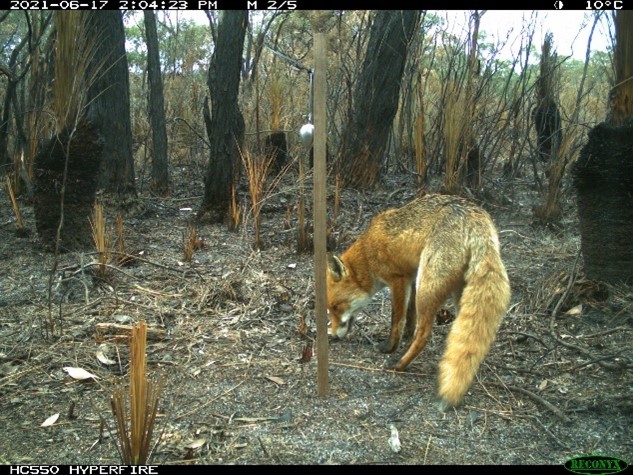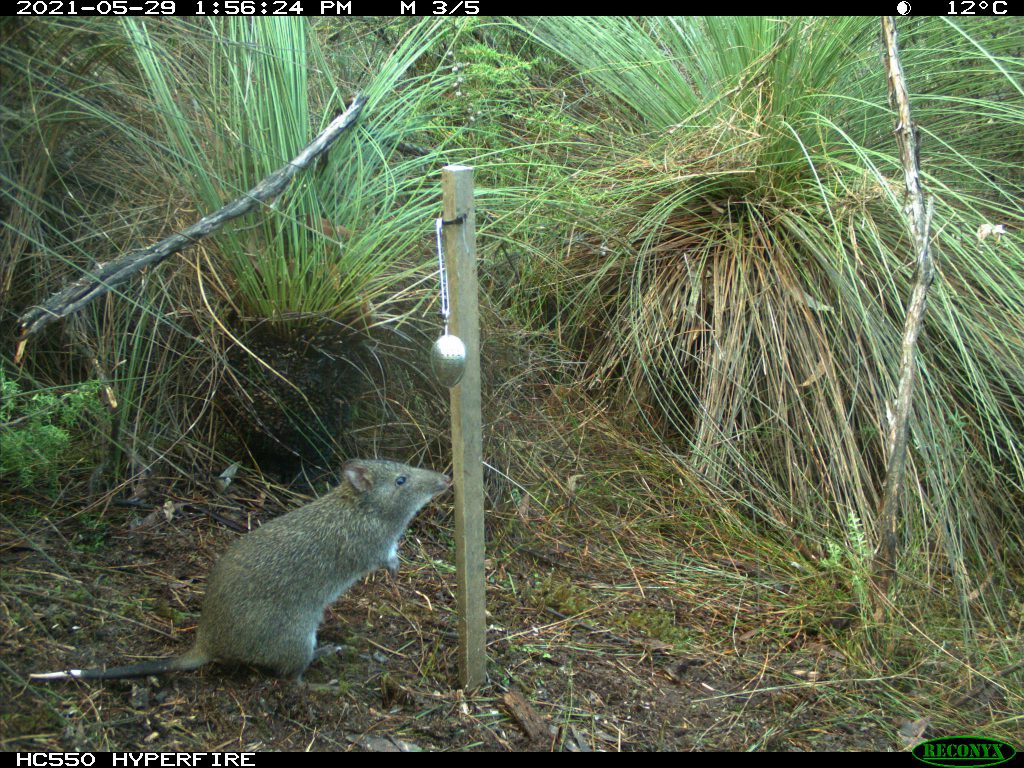Helping threatened species become more resilient to fire
Foxes, cats and fire can all be bad news for Australia’s native small mammals… but this winter, a Victoria-first study in the Otways will test whether controlling foxes and cats, or changing the way some planned burns are conducted, can help threatened species survive in a post-fire landscape.
By simultaneously tracking predators and their prey species with GPS collars, as well as via cameras and scat analysis, researchers from the Conservation Ecology Centre and the University of Melbourne hope to determine whether the interaction between fire and ferals presents an increased risk to threatened native species, such as the Long-nosed Potoroo and Southern Brown Bandicoot, in the Carlisle Heath.
This is the first time GPS data via collars have been used on Long-nosed Potoroos anywhere, and the first time they’ve been used on cats and foxes in the biodiverse heathy-woodlands of the Carlisle Heath.
The researchers will be addressing three main questions:
- Do fox and cat movements change in response to fire?
- Does the patchiness of the burn influence predator or prey behaviour?
- Does lethal control of foxes and cats help small mammals survive in the post-fire landscape?
Prescribed burns are implemented regularly by land management agencies to manage the risk posed by wildfire to human lives, assets, and biodiversity.
However, a growing body of evidence from around Australia suggests fire may increase the vulnerability of native mammals to predation by foxes and feral cats after fire, by removing the dense understory vegetation that provides cover for small mammals and making it easier for predators to move around.
“One of the main aims, and benefits of this study, is that we’re working with the land management agencies—Forest Fire Management Victoria and Parks Victoria to examine the impact of current fire management practices, but also devise strategies they can implement on the ground to improve the resilience of these landscapes,” says lead researcher Mark le Pla, who is a PhD candidate at The University of Melbourne.
“Knowing how invasive predators move in these heathy woodlands, and how their movements change after fire, can help us determine when and where we need to step in with additional targeted management actions to improve native mammal survival post-fire,” says Mark.
“One potential solution may be to integrate the control of these invasive predators with planned burning operations – removing those predators most likely to exploit the burn areas before they get a chance to do damage.”
“Alternatively, if there are factors like fire pattern or severity that influence how invasive predators move after fire, it may be possible to apply fire in a way that prevents or mitigates the response of predators in the first place, for example by altering fire lighting patterns to produce ‘patchy’ burn scars.”
“The Carlisle Heath presents a significant fire and land management challenge,” says David Roberts, District Manager Otways for Forest Fire Management Victoria. “Managing this landscape to maintain multi-aged diverse plant communities, whilst minimising bushfire risk to critical fauna and surrounding communities is a fine balance made harder by climate change variables.”
For interviews or photos contact: Toni Stevens, Communication Manager, Conservation Ecology Centre on 0401 763 130 or toni@conservationecologycentre.org
The project is being led by the Conservation Ecology Centre and The University of Melbourne, supported by the Corangamite CMA, through funding from the Australian Government with additional funding from the Hermon Slade Foundation.


